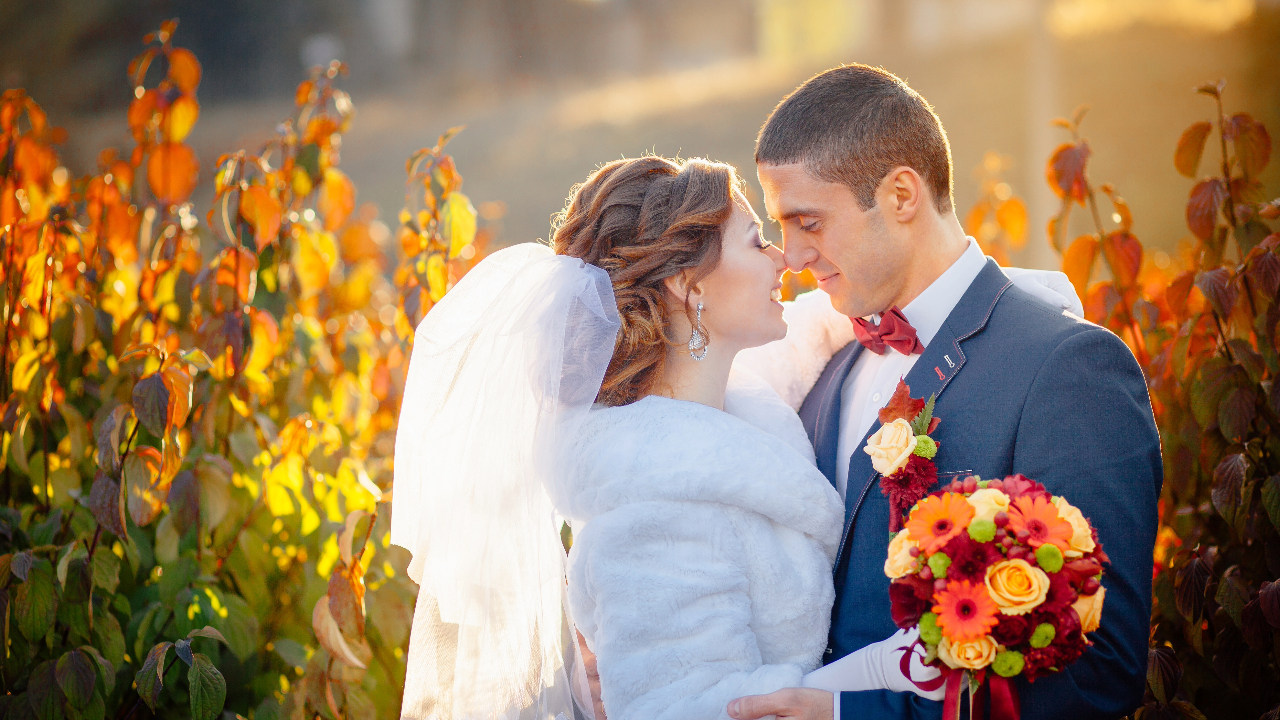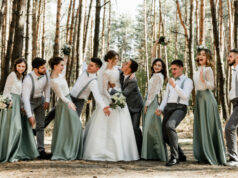For many couples, the idea of tying the knot in Europe is nothing short of a dream. With its historic landmarks, beautiful landscapes, and diverse cultures, the continent offers a plethora of options for those seeking to make their wedding a memorable experience. However, with so many countries and traditions to choose from, how does one decide the best time for a European wedding? This article aims to shed light on this topic, focusing on the ideal seasons, months, and even specific dates for your romantic European nuptials.
▶️ Read also: The benefits of a small intimate wedding in Europe
Understanding the European climate
Europe is a vast continent that encompasses a diverse range of climates, each influenced by various geographical and atmospheric factors. It’s essential to understand these climates when planning a European wedding, as they directly impact the kind of weather you can expect in a given region.
Oceanic Climate (Maritime):
Regions such as the British Isles, parts of France, Belgium, the Netherlands, and Western Germany experience an Oceanic climate. Characterised by:
- 🌡️ Temperature: Mild temperatures year-round with not much variation between summer and winter.
- 💧 Precipitation: Rainfall is distributed fairly evenly throughout the year. Winters can be wet, and summers can occasionally be damp.
- Wedding Consideration: This climate offers a lot of predictability, making it suitable for weddings throughout the year. However, always have a backup plan for rain if you’re considering an outdoor wedding.
Mediterranean Climate:
Countries like Spain, Italy, Greece, and the southern parts of France enjoy a Mediterranean climate. Key features include:
- 🌡️ Temperature: Warm to hot summers and mild winters.
- 💧 Precipitation: Rain is more common in autumn and winter, with summers being dry and sunny.
- Wedding Consideration: Ideal for beach or coastal weddings. Summer months are popular but can be hot, so consider spring or early autumn for milder temperatures.
Continental Climate:
Regions further inland such as central and Eastern Europe, including countries like Hungary, Poland, and Romania, experience a Continental climate.
- 🌡️ Temperature: Distinct seasons, with hot summers and cold winters.
- 💧 Precipitation: Rainfall is more common in summer, with snow in winter.
- Wedding Consideration: Spring and summer are preferred for weddings due to the warm weather. Winter weddings can be magical with snow but require more planning for the cold.
Subarctic and Tundra Climates:
Northern parts of Scandinavia and Russia have subarctic and tundra climates.
- 🌡️ Temperature: Short, cool summers and long, very cold winters.
- 💧 Precipitation: Limited rainfall, but significant snowfall in winter.
- Wedding Consideration: Summer is the most feasible time for weddings. However, those seeking a winter wonderland might consider a winter wedding, keeping in mind the freezing.
Spring: A time of renewal
Spring in Europe is synonymous with rebirth and rejuvenation. As the chill of winter fades, the continent awakens with blossoming flowers, chirping birds, and longer, sunnier days. This season, particularly from late April to early June, offers a perfect blend of pleasant weather and natural beauty, making it a favoured time for weddings. For instance, in France, the Loire Valley, renowned for its historic châteaux and vineyards, becomes a picturesque setting for nuptials. The gardens burst into colour, and the rivers reflect the clear blue skies, creating a fairy-tale-like backdrop for ceremonies and receptions. Similarly, the Amalfi Coast in Italy, with its terraced gardens overlooking the azure sea, provides a romantic setting for spring weddings. The mild Mediterranean climate ensures warm days, while the coastal towns, adorned with blooming bougainvillaea and lemon groves, add a touch of Italian charm to the celebrations.
Further north, countries like the Netherlands offer a unique spring wedding experience. Come April, vast fields turn into carpets of vibrant tulips, daffodils, and hyacinths. Places like Keukenhof, often dubbed the “Garden of Europe,” become sought-after wedding venues, allowing couples to exchange vows amidst a sea of flowers.
Over in the UK, the Cotswolds, with its rolling hills, stone cottages, and historic manors, provides an idyllic countryside setting. Here, spring is marked by fresh green meadows, wildflowers, and the gentle buzz of bees, making it a serene and picturesque location for those looking to tie the knot. In essence, spring in Europe offers a plethora of stunning venues, each promising a memorable start to marital bliss.
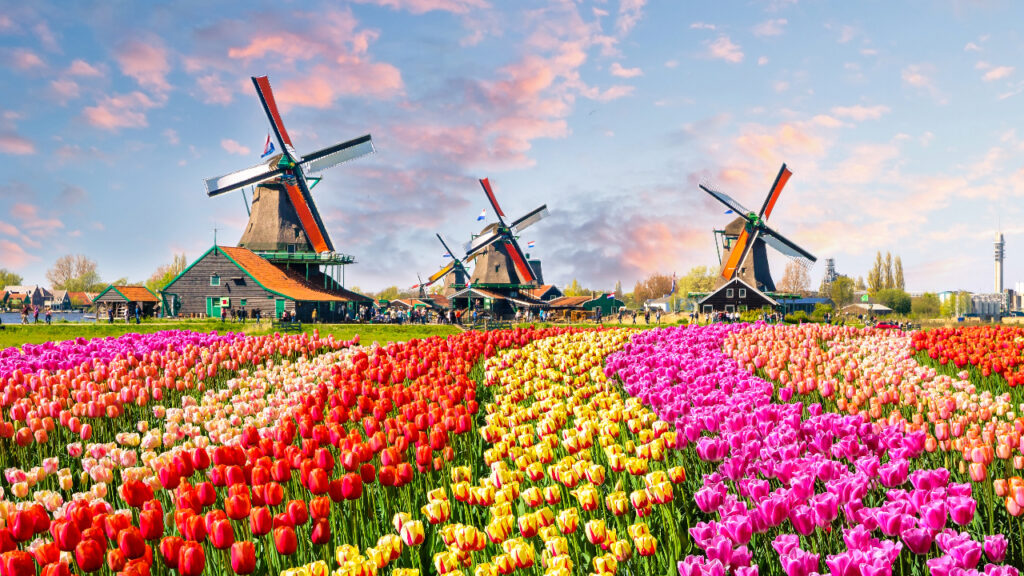
Summer: Sunshine and celebrations
Summer in Europe, spanning from late June to August, brings with it long days filled with sunshine and a general air of festivity. However, it’s also the peak tourist season, meaning some of the most iconic destinations can be teeming with visitors. For couples seeking a serene and intimate setting, it might be wise to consider off-the-beaten-path venues.
The Scottish Highlands, for instance, offer a resplendent summer landscape of rugged mountains, deep blue lochs, and vast moors. The temperatures remain moderate, and the extended daylight hours ensure longer celebrations with nature as a grand backdrop. Similarly, the Baltic countries, including Estonia, Latvia, and Lithuania, present a blend of pristine beaches, dense forests, and historic manors, all under the soft glow of the midnight sun. These regions, lesser known on the tourist circuit, guarantee a unique and tranquil wedding setting.
On the other hand, while Southern Europe boasts some of the continent’s most romantic locales, the recent trends in global warming have led to exceedingly hot summers in regions like Southern Spain, Italy, and Greece. For instance, Andalusia in Spain, with its Moorish palaces and olive groves, is undeniably enchanting, but the mercury can soar in the summer months.
Similarly, the Greek islands, though famed for their sunsets and whitewashed buildings, can become sweltering. Couples keen on these destinations might consider coastal or elevated areas, which tend to be cooler due to sea breezes or altitude. Alternatively, planning the ceremony during the early morning or late evening can help avoid the peak heat. In essence, while summer promises vibrancy and warmth, it’s essential to choose locations that combine comfort with charm, ensuring a memorable and pleasant wedding experience.
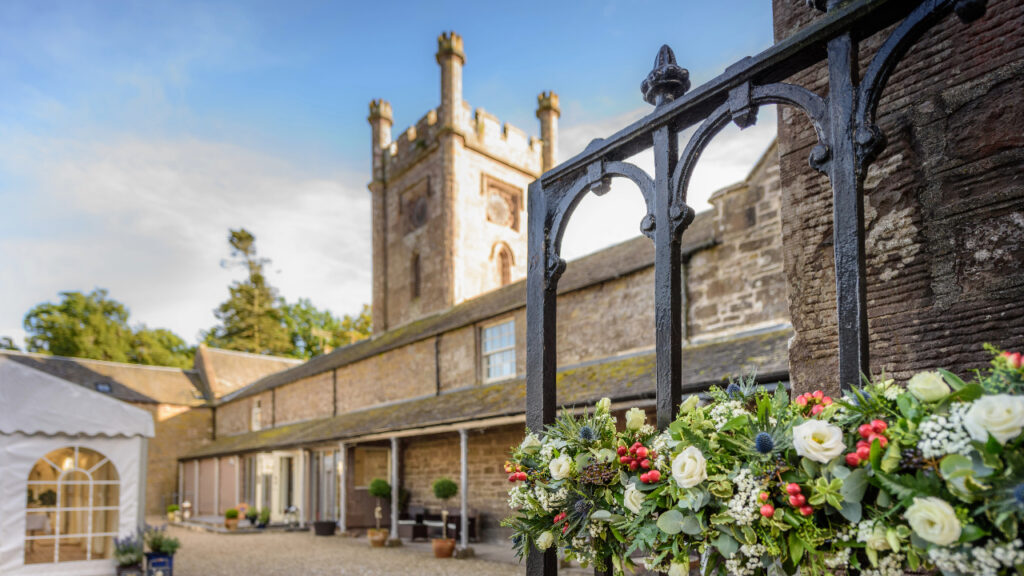
Autumn: A riot of colours
Autumn in Europe is a visual spectacle, as forests, vineyards, and parks transition into a canvas of deep reds, burnt oranges, and golden yellows. This season, spanning from September to November, not only offers a rich and romantic ambiance but also brings with it the advantage of fewer tourists and more competitive prices, as it’s considered off-peak for many venues and service providers.
The Alsace region in France, known for its timber-framed houses and winding canals, is especially enchanting during this time. The vineyards turn into a mosaic of autumnal hues, and the wine harvest adds an extra layer of festivity. Hosting a wedding amidst these vineyards can be both picturesque and cost-effective, given the drop in prices post-summer.
Further east, the Carpathian Mountains, stretching across Poland, Slovakia, and Romania, provide a dramatic backdrop for autumn weddings. As the leaves change, the landscape transforms into a patchwork of fiery tones, with the mountains offering a stark and majestic contrast. In particular, Transylvania in Romania, with its medieval castles and fortified churches, becomes a setting straight out of a Gothic romance. The cooler temperatures and misty mornings further accentuate the region’s mystique.
Additionally, with the summer crowds gone, couples can avail of significant discounts on venues, accommodation, and other wedding services. In essence, autumn in Europe combines the allure of crimson landscapes with the practicality of reduced costs, making it an ideal season for those seeking both beauty and value in their wedding celebrations.
▶️ Read also: Why a wedding in the European off-season can save you money
Winter: Snow-clad romance
Winter, spanning from December to February in Europe, is a season of contrasts. While certain regions are draped in a pristine blanket of snow, lending a magical ambiance, others remain accessible and relatively snow-free, offering their own kind of charm. The allure of winter weddings is undeniable, especially when set against the backdrop of festive lights, cozy fireplaces, and the possibility of a gentle snowfall.
Salzburg in Austria, with its baroque architecture and the majestic Alps in the background, becomes a winter wonderland, with the added delight of Christmas markets filling the air with melodies and the scent of mulled wine. Similarly, Prague in the Czech Republic, with its cobbled streets, historic bridges, and Gothic spires, is imbued with a fairy-tale charm, amplified by the festive season’s glow.
However, for those wary of heavy snow, regions like the Dordogne in France offer a milder winter experience. Known for its medieval towns and châteaux, the Dordogne retains its charm without the challenges posed by excessive snowfall. Regardless of the choice, a winter wedding in Europe promises a blend of romance, festivity, and a touch of magic, making it an unforgettable experience for couples and their guests.
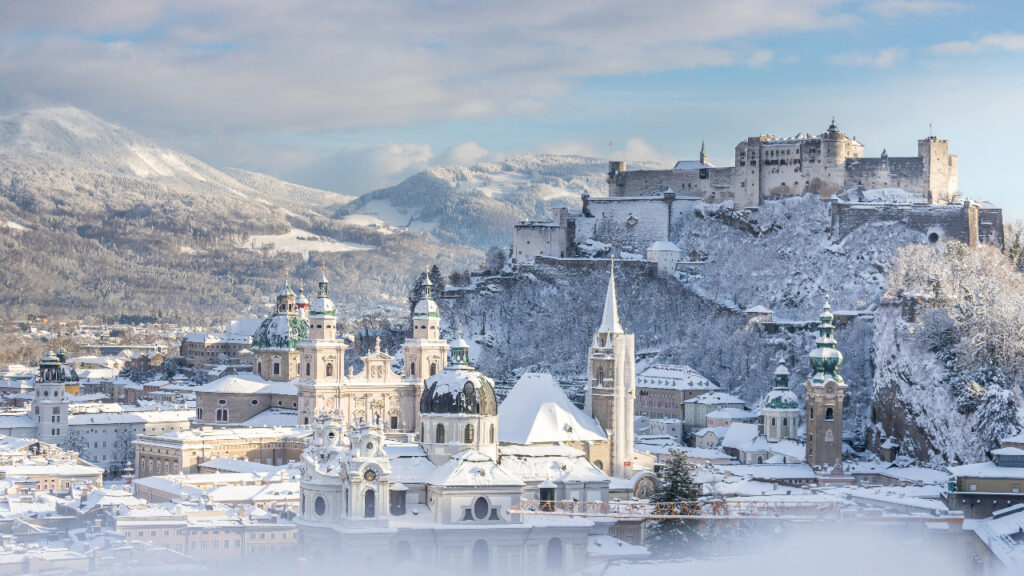
Specific dates to consider… and to avoid
When planning a wedding in Europe, certain dates hold cultural, historical, or romantic significance, making them particularly memorable for nuptial ceremonies. Choosing such a date can imbue your celebration with an added layer of meaning and tradition, creating lasting memories for both the couple and their guests.
- Valentine’s Day (14th February): A universal day of love, this date is popular worldwide and Europe is no exception.
- St. Lucia’s Day (13th December) in Sweden: A day filled with candle-lit processions and singing, it’s a unique time to tie the knot.
- Midsummer Eve in Scandinavia: Celebrated in late June, it’s a day filled with festivities and is a favourite among locals.
And being aware of these dates can help in ensuring a smoother and more enjoyable wedding experience, free from unforeseen hiccups or inconveniences:
- Tourist Peak Seasons: While summer might be a popular wedding season, it’s also when tourists flock to Europe. Popular tourist destinations might be crowded and more expensive.
- Major Holidays: Christmas, Easter, and national holidays can see closures and might not be the best time if you’re planning a big event.
Final considerations
In conclusion, when choosing a date for your European wedding, consider factors like:
- 💸 Budget: Off-peak seasons might be more affordable.
- 🥂 Guest Availability: Ensure the chosen date works for your loved ones.
- 😍 Personal Significance: Sometimes, the best date is one that holds personal significance to the couple.
Europe offers a vast array of options for couples looking to get hitched. Whether you dream of a spring wedding in Paris or a winter wonderland in the Swiss Alps, there’s something for everyone. Remember to research, plan, and most importantly, choose a date that resonates with you and your partner.

